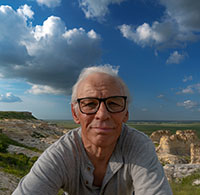The photography world is on the cusp of a profound shift. Artificial intelligence (AI) has made remarkable strides in image generation, creating hyper-realistic visuals that can easily be mistaken for genuine photographs. While AI opens exciting creative avenues, it also raises critical questions about authenticity and trust.
As a photographer, I embrace technological advancements, but the potential for AI-generated images to spread misinformation and erode the value of authentic photography is deeply concerning. This is not merely a theoretical issue; manipulated images have already been used to sway public opinion and even influence political events.
The Quest for Verification
The need to verify the origins and authenticity of photos has never been more pressing. Here are some existing and developing methods:
- Metadata Analysis: Examining EXIF data can reveal inconsistencies in camera models, locations, or timestamps, potentially indicating manipulation.
- Error Level Analysis (ELA): This technique exposes inconsistencies in JPEG compression levels, often a sign of digital alteration.
- Blockchain-Based Provenance: Startups like Truepic and C2PA are leveraging blockchain technology to create tamper-proof records of an image's creation and history.
- AI-Powered Detection: Researchers are developing AI algorithms to identify the telltale signs of AI-generated images, such as unnatural textures or distortions.
These methods offer some degree of protection, but as AI image generation becomes more sophisticated, the cat-and-mouse game between creators and detectors will intensify.
In-Camera Solutions: A Photographer's Dream
To truly establish trust and combat misinformation, I believe a more fundamental solution is needed: in-camera authentication. Imagine cameras that embed cryptographic signatures or watermarks directly into image files, providing irrefutable proof of their origin.
This would empower photographers to assert the authenticity of their work, giving clients, publishers, and the public the confidence that a photo is genuinely captured in the field. Sony, among others, is exploring such technologies, and their widespread adoption could be a game-changer for the industry.
A Call to Action
As photographers, we must not only adapt to this evolving landscape but actively participate in shaping it. By advocating for robust verification standards and embracing in-camera solutions, we can ensure that photography retains its power to document reality and inspire genuine emotion. Let us not allow the AI image mirage to obscure the true value of authentic visual storytelling.





